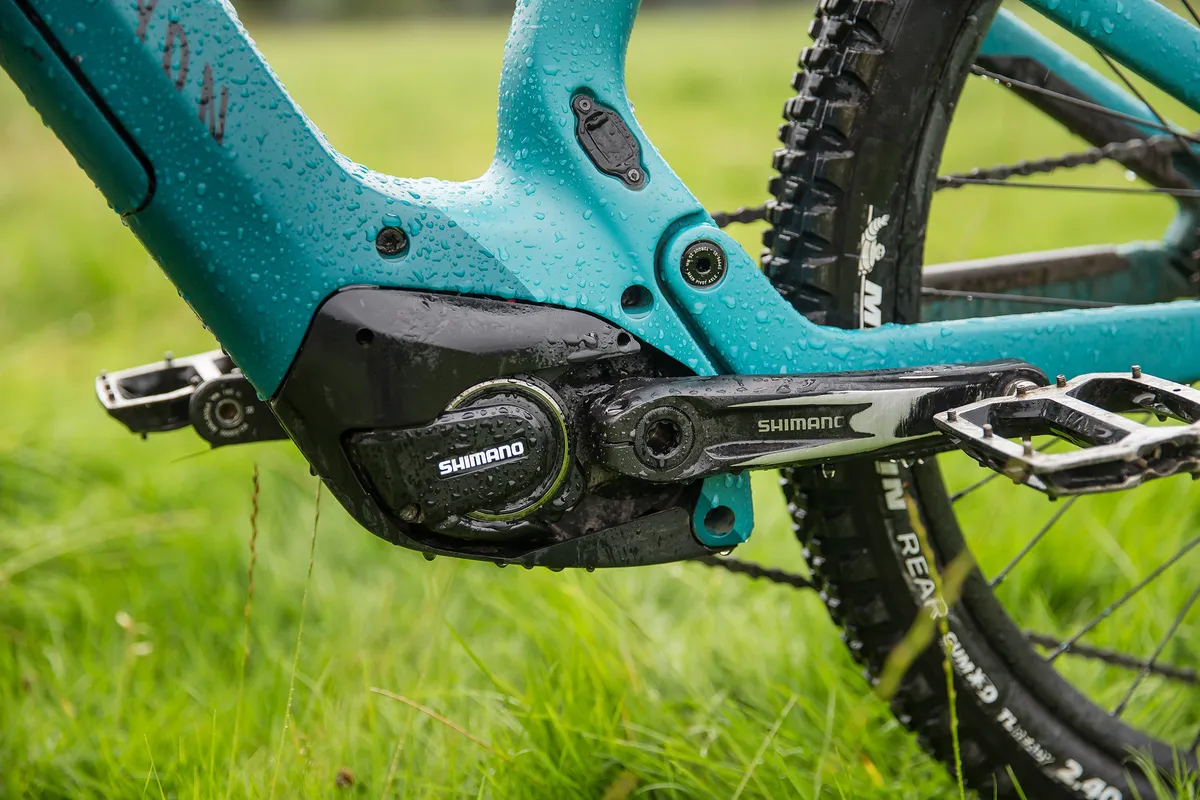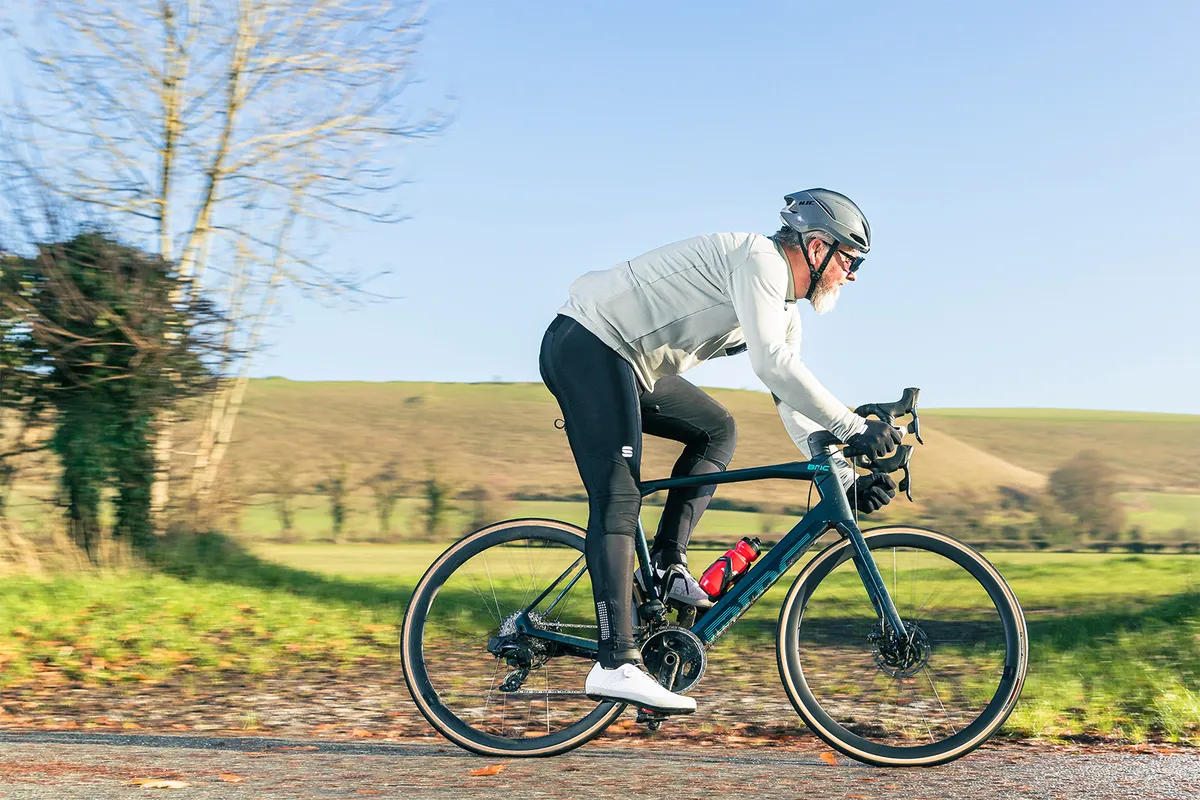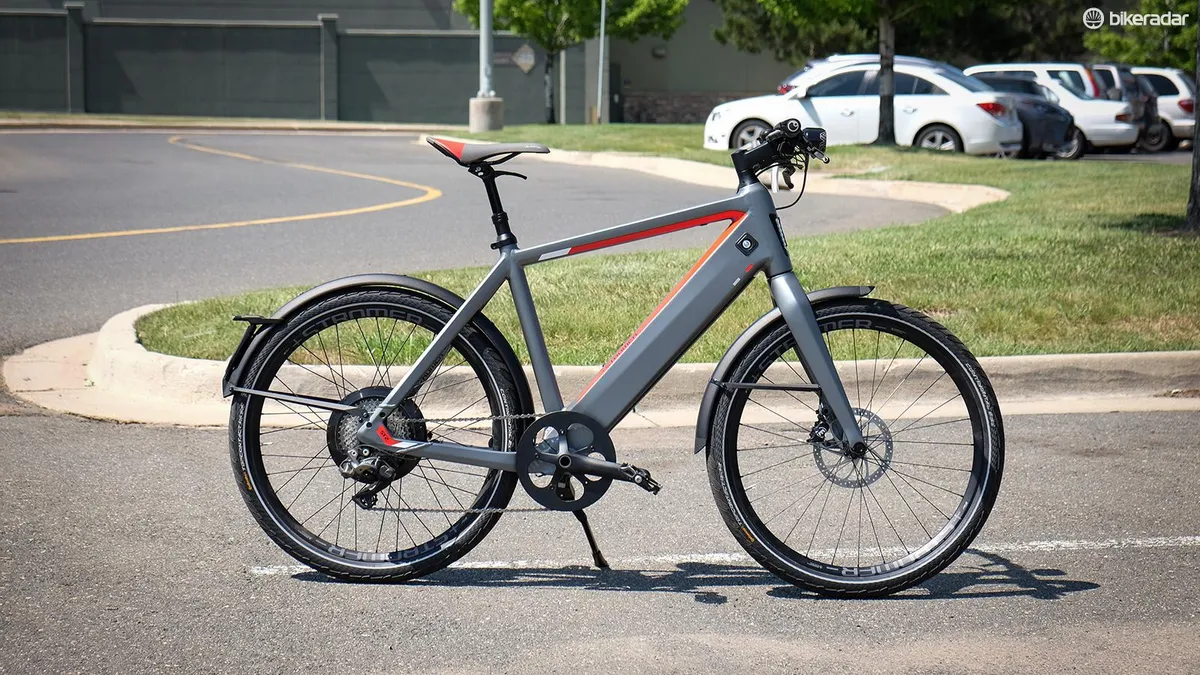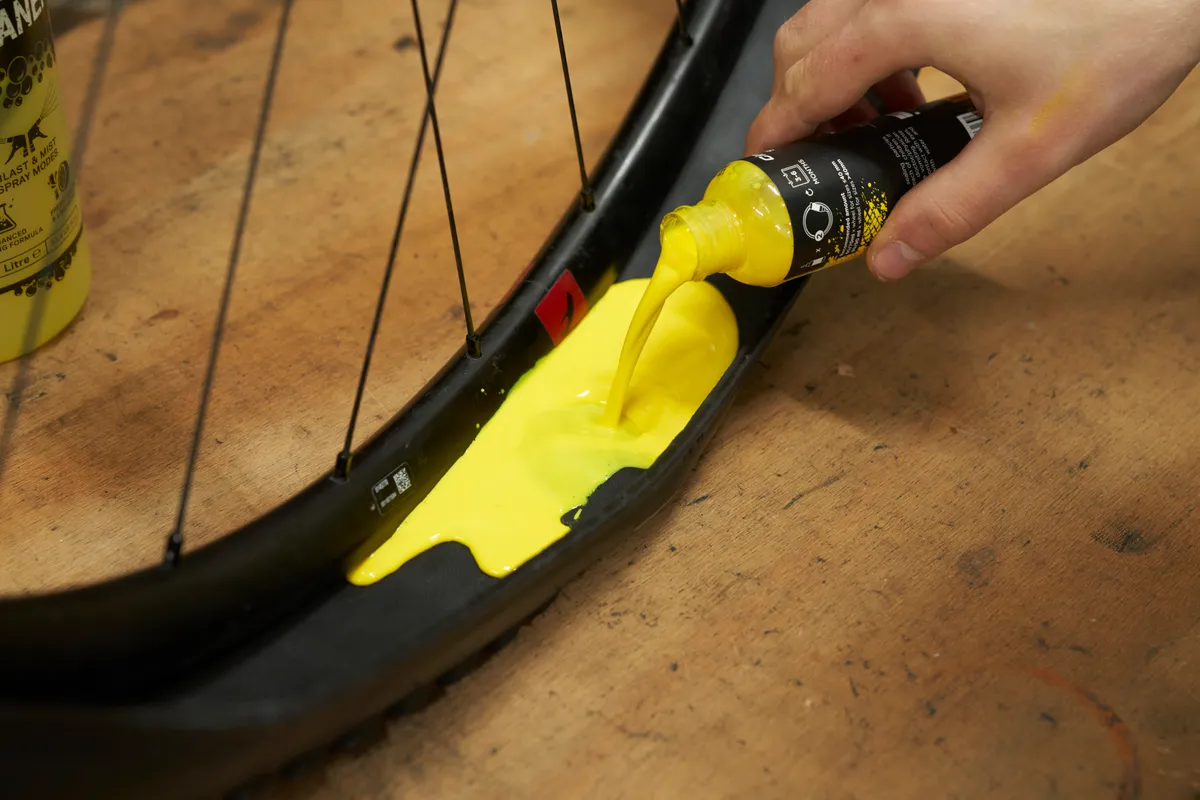Electric bike tyres are designed to withstand the increased power, weight and speed of ebikes.
As with all bike tyres, ebike tyres are crucial in keeping you upright and moving forward – and for stopping when cycling.
While electric bike tyres may seem like a niche product, tyre makers are offering an increasing range of tyres either designed specifically for electric bike use or labelled as being compatible with electric bikes.
“Ebikes are heavier and often travel faster, especially on technical terrain, says Tommaso Cappella, Vittoria's ebike tyre specialist.
Cappella cites, as an example, the high torque and speed on off-road climbs, compared to a non-assisted bike.
Cappella says ebikes also offer new riders a route into cycling, but that lack of experience can sometimes put a tyre under pressure, with the need for additional reinforcement.
“That might mean a wrong line taken at high speed or the risk of a snake-bite puncture while climbing a rocky trail," adds Cappella. "That's not a big issue for a non-powered bike, where the roughness of the terrain reduces the speed and, therefore, the impact on the tyre."
Let's dive into more detail on electric bike tyres and why you might want to use one over a standard tyre.
We’ll also run through the reasons for fitting an electric bike tyre, what the options are and how to choose the best ebike tyre for your electric bike.
What is an electric bike tyre?

Electric bike tyres typically have a more robust construction than an equivalent tyre designed for use on a non-assisted bike.
The tyre also needs to provide greater grip, as a result of the additional torque and power provided by electric bike motors, compared to non-assisted bikes. That means brands may use a softer rubber compound and a more aggressive tread pattern than on a tyre intended for a non-assisted bike.
Rolling resistance and weight are less of an issue if there’s a motor to help out, so a tyre designed for an electric bike may be offered in wider sizes and include added puncture protection.
Electric bike tyres may be marketed as recommended for ebikes. However, there’s also a specific standard, ECE-R75, which tyres must pass if they’re sold in the EU and designed for faster electric bikes. These are also called fast pedelecs and are capable of providing assistance to speeds above 25kph. There’s no equivalent rating for tyres for faster Class 3 ebikes in the US.
Many ebike-recommended tyres are also ECE-R75 certified.
Why fit electric bike tyres to your ebike?

In principle, you could use a tyre designed for a non-assisted bike on your electric bike and, in fact, that’s what many electric bikes have been sold with, and still are.
But there are good reasons to run tyres designed specifically for electric bikes on your ebike and it’s mandatory in Europe for fast pedelecs.
Here are a few reasons why a tyre designed for an ebike might be a good choice:
- Increased bike weight
- Higher torque
- Higher speeds
- Greater chance of tyre damage
Increased bike weight

The motor and battery mean that an electric bike will always be heavier than a similar non-assisted bike; in many cases, significantly so.
That has several ramifications, but primarily means that there’s more weight for the tyre to support. That, in turn, means you’re likely to have to run slightly higher tyre pressures, so an ebike tyre may also be wider and more robust in its construction.
Higher torque
The presence of a motor means there’s much more torque transmitted through to the tyre than on a pedal-only bike. As a result, more grip is required to prevent the tyre from losing traction and skidding.
The increased torque will also, over time, increase wear on the tyre and, as Vittoria’s Cappella points out, increase the risk of tyre damage from larger hits on more technical terrain.
Higher speeds
When riding off-road on an electric mountain bike, or on hilly routes on an electric road bike, you're likely to be riding at higher average speeds than a pedal-only bike.
With this in mind, there are advantages in having a rubber compound designed to match your likely riding speed. The extra speed and mass will result in more force on the tyre’s sidewall when cornering, too.
There’s also likely to be significantly more kinetic energy to scrub off when you want to slow down an ebike. As with the increased torque, that again means potentially faster tyre wear. This is a significantly greater consideration for speed pedelecs than for standard ebikes.
Greater chance of tyre damage
The combination of greater torque and higher weight results in a greater chance of damage to the tyre, particularly to the sidewalls. There may be extra puncture protection built into an electric bike tyre.
The good news here is that the motor assistance provided by an ebike means that, even with a beefed-up (and heavier) tyre construction, you’re unlikely to notice the extra mass and inertia of an ebike-specific tyre.
Meanwhile, you should get a longer life from your tyre than from a non-electric version. It’s less likely to be put out of action by damage and it should give you better grip, acceleration and stopping power than a tyre not designed specifically for ebike use.
Vittoria's Cappella suggests that a foam tyre insert, paired with an ebike tyre, is a good solution to help reduce the risk of damage even further, and offer a degree of ride-flat capability.
What pressure should you run electric bike tyres at?

There’s no perfect answer to this question, because bicycle tyre pressure is determined by factors including tyre width, intended use and road or trail conditions.
But, in general, you’ll want to run a higher pressure in an electric bike tyre to handle the extra weight and power of the ebike, while still ensuring adequate grip and some damping from the surface you’re riding over. However, go too high and you may negatively impact grip and make the bike uncomfortable to ride on rough terrain.
Go too low and you’re at greater risk of damaging your tyre and possibly your rim, and handling may be degraded. You also risk a pinch flat due to the tyre – and inner tube, if you’re using one – getting caught between the rim and the surface you’re riding over.
What width electric bike tyre should you buy?

Many ebike tyres are available in similar formats to their standard tyre equivalents, although there may be wider options. Ultimately, your electric bike frame’s tyre clearance will dictate how wide a tyre you can fit.
In general, tyre clearance will be wider for eMTBs than for electric commuter bikes, as well as electric road and e-gravel bikes. But even hybrid, road and gravel ebikes typically provide greater frame clearance than non-electric bikes.
As discussed above, an electric bike will weigh more, hit technical terrain harder and put more torque through the tyre, so it's sensible to fit wider rubber if possible.
Electric bike tyres by discipline
Hybrid/urban bikes

Several brands have tyres designed for hybrid electric bikes in their range. The Schwalbe Marathon E-Plus, for example, adds extra puncture protection and uses a rubber compound called Addix-E, formulated for extra grip at higher speeds.
It’s ECE-R75 certified for use on fast ebikes and is available in six widths, from 37mm up to 55mm.
Road and gravel bikes

In general, road and gravel electric bikes aren’t supplied with ebike-specific tyres, although they may have wider tyres than pedal-only bikes, for the extra grip and to support the additional weight of the ebike.
In some cases, a tyre may be recommended for ebike use, though. Schwalbe, for example, denotes some of its tyres as ‘E-bike Ready 50’, to indicate they’re recommended for use on ebikes with assistance limited to 25kph.
It also sells the E-One road tyre in 28mm and 32mm widths. This has a semi-slick tread and uses the Addix Race rubber compound, which Schwalbe says offers good cornering grip and durability. It’s ECE-R75 approved for fast ebikes.
Schwalbe doesn’t sell an ebike-specific gravel tyre though, pointing gravel ebike users to its regular G-One gravel tyre range.
Electric mountain bikes

Electric mountain bike tyres are typically the grippiest ebike tyres, because they need to maintain traction over loose surfaces. They may use softer rubber and have a more aggressive grip than a non-eMTB tyre.
In some cases, such as the Schwalbe Eddy Current, the tyres may be front and rear-specific. The rear Eddy Current tyre is designed to provide the additional traction needed to handle the motor output, and for improved wear resistance, while the front tyre is engineered for grip when cornering and braking.
Speed pedelecs

Speed pedelecs exist in Europe as a standalone category separate from regular ebikes.
These are electric bikes rated for speeds greater than a standard ebike. They can provide assistance up to 45kph, whereas a standard electric bike motor is speed-limited at 25kph. In the US, the equivalent to speed pedelecs are 'Category 3' ebikes, which are motor-assisted up to 28mph.
In both cases, the motor may be significantly more powerful than that on a standard ebike and the bike itself may be heavier, so the considerations for electric bike tyres are even more significant for speed pedelecs.
There’s a separate EU regulation, called ECE R-75, which specifically governs the approval for ebike tyres suitable for speed pedelecs. It’s the equivalent of a tyre designed for use on a moped, as speed pedelecs are classed as mopeds under EU and UK law, and need to be taxed and insured as such.
Tubeless electric bike tyres explained

As with other cycle tyres, ebike tyres are now often designed so that they can be run tubeless.
A tubeless tyre can be run at a lower pressure than a tubed tyre, as there’s less risk of a pinch flat when there’s no inner tube. That makes for a more comfortable ride and greater grip, while the sealant will also help to heal smaller punctures.
The downside of running a tubeless setup is the sealant needs to be kept topped up, because it will dry out over time.
Setting up tubeless tyres is also potentially more difficult and messier than with a tubed tyre. If you do get a puncture, you and your bike may be sprayed with sticky sealant. If you need to fit an inner tube to get home, this too will be messy.
So do you need an ebike-specific tyre?
If you’re riding a regular, lower-powered electric bike, limited to 25kph, you’re almost certainly going to be fine with a standard tyre.
However, traction may be improved and the risk of tyre damage reduced with a tyre designed for electric bike use.
Given the increased torque and rougher riding terrain encountered by eMTBs, an electric mountain bike, in particular, may perform better with an ebike-specific tyre.
If you have a speed pedelec in the EU, you need to fit a tyre rated to the ECE-R75 standard. Although not legally mandated, it would be prudent for US riders to fit such a tyre to a Class 3 ebike, too.



